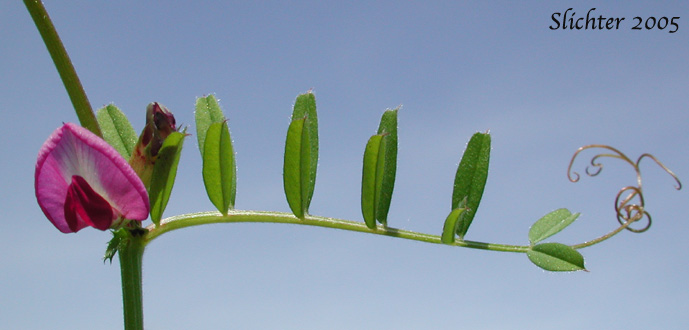
Common vetch is a weedy perennial species with one to several stems climbing via tendrils up through the foliage of other plants. The stems range from 30-80 cm long. The stems and leaves are often glabrous but may also bear numerous straight, stiff, appressed hairs. The stipules at the base of the pinnately compound leaves are 3-8 mm long and generally deeply toothed. The leaves are alternate along the stems and usually have 5-7 pairs of linear, oblanceolate or obovate-oblanceolate leaflets with a long, well-branched, prehensile tendril at the tip (See photos above and below.). The leaflets range from 1.5-3 cm long and have tips that are rounded or truncate but tapered abruptly to a narrow point at the tip.
The flowers are solitary or paired in the axils with peduncles up to 25 mm long. The corolla measures 16-25 mm long and is orchid to purplish in color, often with reddish wings. The banner is large and hooded at first, but becomes erect. The calyx is about half the length of the corolla with linear teeth that are over half the length of the calyx tube. The pubescent pods range from 3-8 cm long and readily produce seedlings.
Common vetch is found in disturbed soils, including road sides, fallow fields and waste areas.
Natives of Europe, common vetch was originally cultivated in North America and has since escaped and become established over much of the United States. Variety sativa is found west of the Cascades in Oregon and Washington.